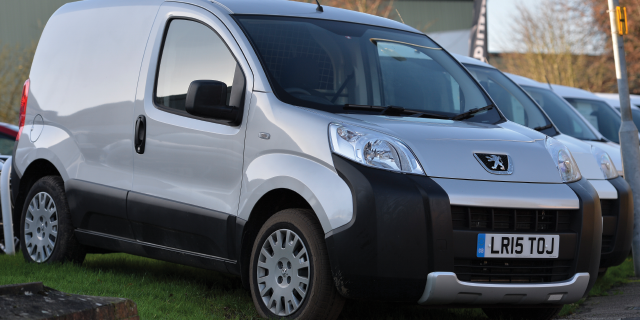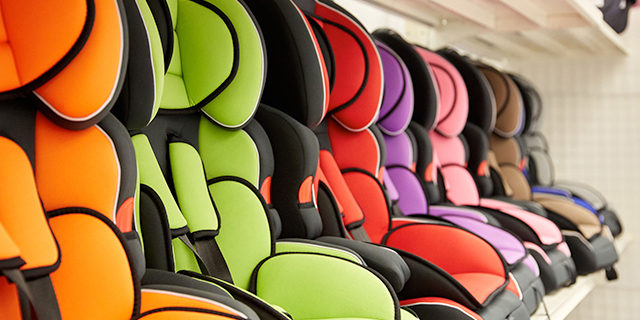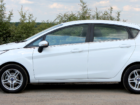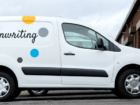Unless you really know what to look for when buying a van, finding the right one can be pretty head scratching. So, here’s the lowdown on the questions you should ask and what you should watch out for if you’re in the market for a used van.
How do I buy a van that’s reliable?
Whether you buy a used van, or a buy a new van, the first step is always the same – research. As basic and uninteresting as it sounds, reading up on different makes and models, will help you come to an informed decision about what vehicle is right for you, as well how reliable it’s likely to be.
According to the Society of Motor Manufacture and Traders (SMMT), the Ford Transit Custom is the best-selling van to-date in the UK. Other popular makes and models include the Ford Transit, the Volkswagen Transporter and the Vauxhall Vivaro.
Should I buy a used van?
Buying a used van is riddled with potential pitfalls – read our guide to make sure you get the best used van possible for your cash
It’s hard enough shopping for a new van when you’re looking at box-fresh examples straight from the dealer. But head out into the classifieds looking for a second-hand van and there’s a whole world of other possible issues to consider.
And if you don’t want to be hit with hefty bills when your new van breaks down, or suffer the realisation that you’ve bought a working vehicle that isn’t fit for purpose, it’s important to take the extra time and make sure you’re really informed about which van best suits you and your needs.
Researching a used van
Just as if you were buying a new car, you need to make sure you’re purchasing a used van that suits your needs. You’d never buy a two-seat car if you had three kids and a dog – so why would you risk buying a van that’s too small or not suitable for what you need it for?
The first port of call when looking for a reliable used van is its maintenance and MOT history. You should look for vehicles that have evidence of being serviced regularly and not simply ‘bodged’ together.
You will also want to check the vehicle’s past MOTs to make sure that the mileage displayed tallies up (buying a ‘clocked’ van could be expensive and illegal) and that there are no immediate items of worry on previous tests. You can do that on the government’s website here.
You can also use the government’s site to check if the van has been recalled by the manufacturer – if it has, you should ask for evidence that this work has been completed. If you’re buying a relatively modern van, reliability data is available to show which models are most likely to break down and why. As vans get older, this becomes less of a faithful representation, as the way that owners drive and maintain the vans affects them more.
Van size
Vans in the UK typically come in four categories – car-derived van, small van, medium van and large van. Think about the largest size of load that you regularly carry and make sure that the van you’re buying fits this with room to spare. The same goes for payloads (how much weight the van can legally carry). You’re liable for a fine and potentially points on your licence if you’re caught driving an overloaded van, so make sure the vehicle you’re buying has plenty of excess payload.
Our sister site, Parkers.co.uk, has detailed dimensions and payload pages for vans old and new so it’s easy to make up your mind. Consider too what kind of body you’d like. If you load things like rubble or concrete for example you may wish to look for a tipper or dropside van, while those who typically travel more than two-up could consider a four-door crew van.
Payload
When you buy a van for work, its carrying capacity is likely to be one of the most important features you’ll need to consider. Overloading your vehicle is taken pretty seriously by the Vehicle and Operator Safety Agency (VOSA) and you could be fined even if your van is just 5 -10 per cent heavier than it should be; and if it’s overweight by more than 30 per cent you could end up in court.
With that in mind, it’s important to think about what cargo you’re carrying – is it just your tools and equipment, do you also carry heavy materials, or do you cram your van with deliveries? Whatever you’re transporting, look at the van’s dimensions and permitted weight carrying allowance so you stay within the law.
What should I look for when I’m on a test drive?
Always take the van for a test drive, even if the price is right and it suits your needs on paper. Remember, you’ve got to drive it, so make sure it’s comfortable and that you like the feel of it; here’s what else you should consider:
• the engine should start first time and there shouldn’t be any rattling or clanking as you accelerate
• the engine also shouldn’t produce any smoke, or burning smells – these are indicators that something could be very wrong
• check tyres are within the legal limit and that wear and tear is evenly spread (if it isn’t the alignment might be off)
• when you brake, there shouldn’t be any noise, if there is, then the brakes might need to be replaced
• make sure all the controls and instruments are in working order, such as lights, indicators and fuel gauge
• look for touch ups on the paintwork – are they hiding something?

Van running costs and emissions
Everybody wants to spend as little as possible on their vans, so there are a few pitfalls to watch out for when purchasing. Look at the official fuel economy figures, remembering that a difference of just a few mpg can work out to be a great deal of money when stretched over several years and many thousands of miles.
Also consider parts and dealer service. An unusual make and model may be cheaper to buy but parts and labour could prove more problematic and expensive. Premium brands, such as Mercedes, deliver a top-quality service but often at a higher price than mainstream manufacturers such as Ford.
Also think about where you drive the van. City centres across the country are considering implementing low emissions zones, with London’s one being well established. To drive into these without having to pay a fee, you’ll need to be driving a van that meets modern emissions standards – Euro 6 for diesels and Euro 4 for petrols. Check if your vehicle meets these at Transport for London’s website here.
Think about image
It might seem superficial, but the image your van portrays is just as important as its payload and reliability – after all, if you use it for work, then it’s what you’ll be turning up in to meet clients.
One idea you should give serious thought to is getting a professional to sign write your logo on your van. Not only does this give you the benefit of low cost, long term advertising, it looks professional.
Plus, insurers see it as an indication that you’re committed to your business (and therefore less likely to take risks), which could mean you pay less for your van insurance premium.
mustard.co.uk, helping you stay protected
If our van buyer’s guide has inspired you, the next step is to work out what sort of insurance you’ll need. Whether you’re interested in a light commercial vehicle (LCV), or a mini-bus – we’ve got advice on what you should consider. We’ll also help you understand the different van insurance terms, as well as explain what different types of commercial van insurance policies there are.
For more information on insuring your van, new or used, get in touch with mustard.co.uk today or get a quick and easy online van insurance quote to see how much you could save.









